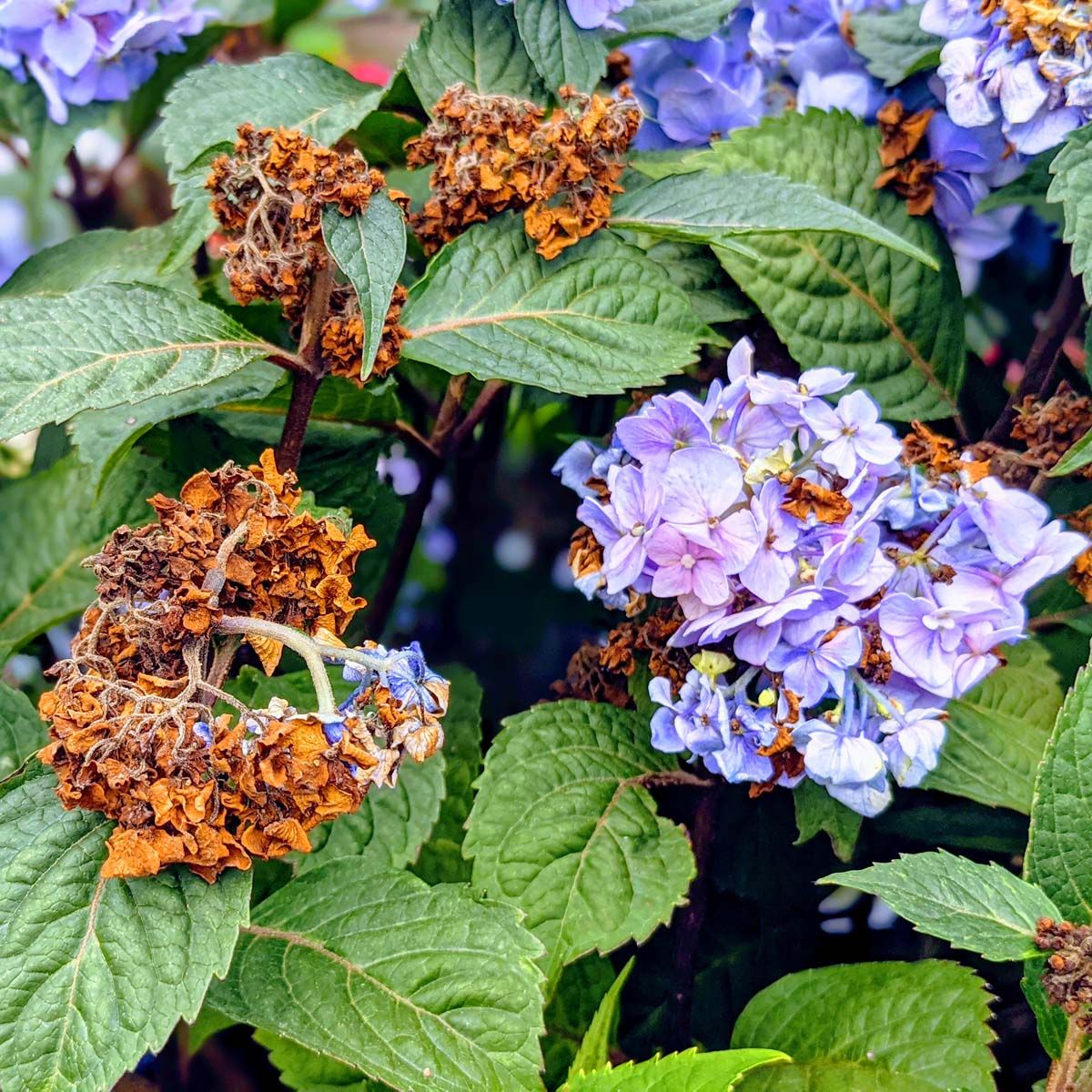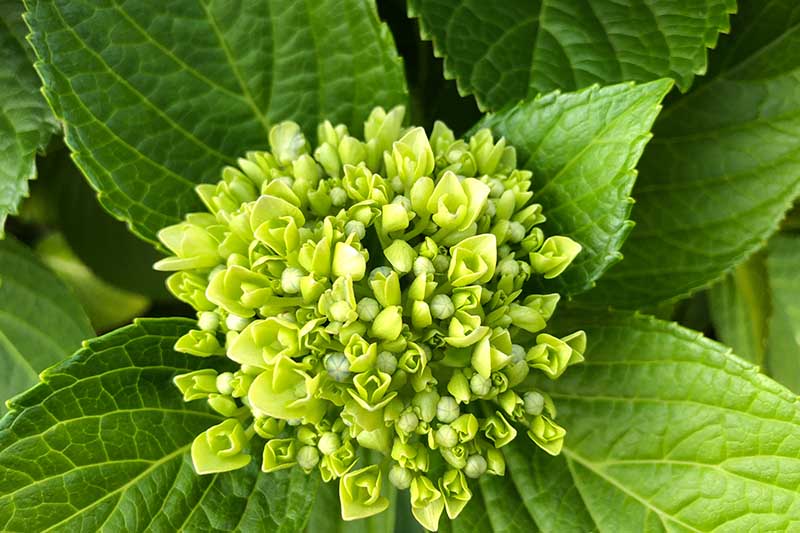Deadheading Hydrangeas In Spring: The Easy Way To Keep Your Plants Blooming
Deadheading Hydrangeas in Spring: The Easy Way to Keep Your Plants Blooming
Hydrangeas are a popular ornamental shrub that is known for its beautiful flowers. However, if you want your hydrangeas to bloom their best, it is important to deadhead them regularly. Deadheading is the process of removing spent flowers, and it helps to encourage new growth and blooms.
The best time to deadhead hydrangeas is in the spring, when the first set of flowers has faded. To deadhead a hydrangea, simply cut the stem just below the flower head. You should make the cut just above a healthy set of leaves.
Deadheading hydrangeas in the spring has several benefits. First, it helps to prevent the plant from wasting energy on producing seeds. This energy can instead be used to produce new growth and flowers. Second, deadheading helps to keep your hydrangeas looking neat and tidy. Third, deadheading can encourage a second flush of blooms in the fall.
If you live in a cold climate, you may want to wait until the spring thaw to deadhead your hydrangeas. This is because the plant may still be dormant in the winter, and deadheading could damage it.
Here are some tips for deadheading hydrangeas:
- Use sharp, clean pruning shears.
- Make the cut just above a healthy set of leaves.
- Dispose of the dead flowers properly.
- Deadhead regularly throughout the spring and summer.
With a little care and attention, you can keep your hydrangeas blooming all season long.
Main Content
In addition to the benefits mentioned above, deadheading hydrangeas can also help to prevent the spread of diseases. When dead flowers are left on the plant, they can become a breeding ground for pests and diseases. By deadheading regularly, you can help to keep your hydrangeas healthy and free of pests and diseases.
If you are not sure how to deadhead hydrangeas, there are many resources available online and in gardening books. There are also many videos that demonstrate the proper technique.
Once you have learned how to deadhead hydrangeas, it is a simple and easy task that you can do yourself. With a little regular care, your hydrangeas will reward you with beautiful blooms all season long.
Conclusion
Deadheading hydrangeas in the spring is an easy way to keep your plants blooming their best. By following the tips in this blog post, you can learn how to deadhead hydrangeas properly and keep your plants healthy and beautiful for years to come.
Deadheading hydrangeas in spring is a simple but important task that can help your plants produce more blooms and stay healthy. When you deadhead, you remove the spent flower heads, which encourages the plant to focus its energy on producing new growth and flowers.
There are a few different ways to deadhead hydrangeas, but the most common method is to use a pair of sharp secateurs. Simply cut the stem of the spent flower head just above a pair of healthy leaves. You can also deadhead hydrangeas by hand, but this can be more difficult, as the stems can be tough.
The best time to deadhead hydrangeas is in the spring, when the new growth is starting to emerge. This will give the plant time to produce a second flush of blooms in the summer.
If you're not sure how to deadhead hydrangeas, or if you want more information about this important task, I recommend visiting . This website has a wealth of information about hydrangea care, including detailed instructions on how to deadhead your plants.
FAQ of deadheading hydrangeas in spring
- Q: When is the best time to deadhead hydrangeas in spring? A: The best time to deadhead hydrangeas in spring is when the new growth is about 4-6 inches long. This is usually in late April or early May. If you deadhead too early, you may remove some of the new growth. If you deadhead too late, the flowers may have already started to form.
- Q: How do I deadhead hydrangeas? A: To deadhead hydrangeas, simply pinch or cut off the spent flowers at the base of the stem. You can use a pair of sharp scissors or garden clippers. Be sure to wear gloves if you have sensitive skin.
- Q: Why should I deadhead hydrangeas in spring? A: Deadheading hydrangeas in spring helps to promote new growth and flowering. It also removes any diseases or pests that may be present on the spent flowers.
- Q: What type of hydrangeas should I deadhead? A: Not all hydrangeas need to be deadheaded. Only hydrangeas that bloom on old wood, such as bigleaf hydrangeas, need to be deadheaded. Hydrangeas that bloom on new wood, such as panicle hydrangeas, do not need to be deadheaded.
- Q: What are the benefits of deadheading hydrangeas?
A: There are several benefits to deadheading hydrangeas in spring. These include:
- Promoting new growth and flowering
- Removing diseases and pests
- Keeping the plant looking tidy
- Ensuring that the flowers bloom at their best
Image of deadheading hydrangeas in spring
- Image 1: A close-up of a hydrangea flower head that has been deadheaded. The dead flowers have been removed, leaving behind the green buds.

- Image 2: A gardener using a pair of pruning shears to deadhead a hydrangea bush.

- Image 3: A hydrangea bush in the springtime, with the dead flowers removed. The new buds are starting to grow, and the bush is looking healthy.

- Image 4: A diagram of a hydrangea flower head, showing where to make the deadheading cuts. The cuts should be made just above the first set of live buds.
- Image 5: A close-up of a hydrangea bud, showing the green growth that will eventually bloom into a flower.

Post a Comment for "Deadheading Hydrangeas In Spring: The Easy Way To Keep Your Plants Blooming"